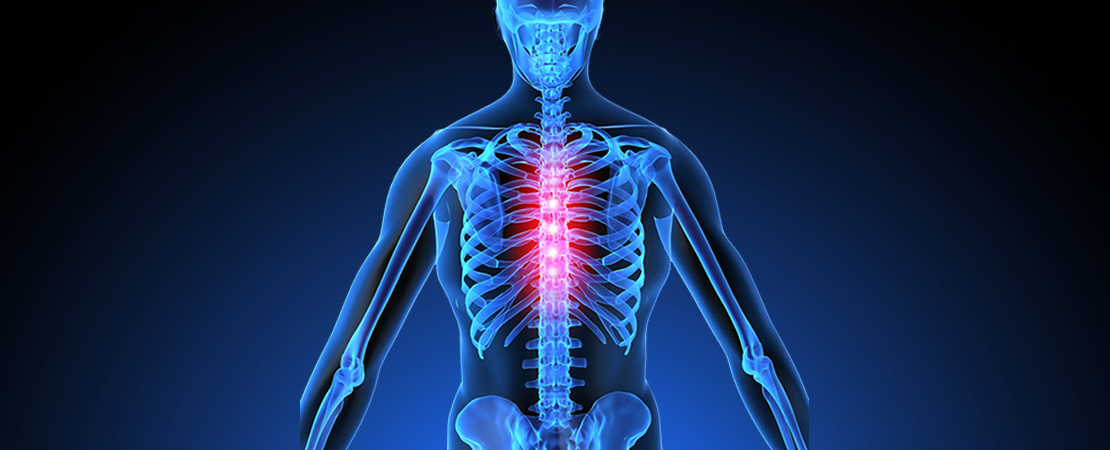
Introduction
Thoracic or dorsal spine disc herniation/canal stenosis is low-incidence compared to lumbar and cervical disc pathology. This is probably due to lower range of mobility, unique anatomy and function of this segment of the spinal column. Symptomatic thoracic herniated discs have historically been either treated using open exposures such as extensive open chest approach aka thoracotomy or transthoracic anterior approach; or radical extensive posterior approaches that involve a wide incision with resection of parts of the posterior rib cage, commonly known as costotransversectomy.
Although soft disc herniation occurs in the thoracic spine, many thoracic disc herniation is due to calcified hard disc protrusion. Clinical symptoms include: axial pain, thoracic back pain; dorsal radiculopathy (compression of the passing nerve root causing radiating pain along the rib cage, chest, and abdomen); dorsal myelopathy (compression of the central thoracic spinal cord causing numbness in the legs, difficulty in walking, and disturbance in bowel and/or bladder control.
Endoscopic surgery of the mid-back
Although conservative medical treatment is primarily offered for many patients with thoracic disc herniation/canal stenosis, surgical treatment is needed for patients suffering from myelopathy and/or neurological deficit caused by a thoracic disc herniation/canal stenosis. The endoscopic approach to the thoracic spine involves an approximate 18mm skin incision at the posterior thoracic area for insertion of the endoscope and endoscopic instrumentation. The entire surgery is then continued under complete panoramic endoscopic visualization.
The protruded disc is removed or the stenotic canal is circumferentially widened using custom-designed endoscopic instrumentation and technology. After the operation is completed, a small bandage is placed at the incision site. Only an overnight hospital stay is required and postoperative discomfort is minimal.
Benefits
The endoscopic approach to the thoracic spine is least invasive as wide extensive exposure is not necessary. It offers an effective alternative to the extensive conventional procedures, such as the anterior transthoracic discectomy (which is an open chest surgery requiring postoperative chest tube drainage and extended hospital stay) or extensive open posterolateral approaches. The hospital stay is overnight and is effective in relieving dorsal radicular and/or myelopathic symptoms.
The utilization of an ultra high-definition endoscopic visualization further enhances the goal of successful disc resection or canal/nerve root decompression. This provides the patient with a better chance of having the symptoms of pain or leg weakness resolved. The considerably less-traumatic surgical approach also leads to a markedly decreased postoperative discomfort, a speedier recovery, an earlier return to work, and best of all preserves spinal functional mobility. Post-operation, the only thing on the patients back is a small band and he/she can shortly resume full normal activity.
Endoscopic Operation

Animation


